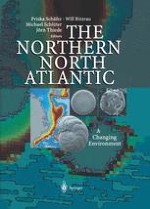The northern North Atlantic is one of the regions most sensitive to past and present global changes. This book integrates the results of an interdisciplinary project studying the properties of the Greenland-Iceland-Norwegian Seas and the processes of pelagic and benthic particle formation, particle transport, and deposition in the deep-sea sediments. Ice-related and biogeochemical processes have been investigated to decipher the spatial and temporal variability of the production and fate of organic carbon in this region. Isotopic stratigraphy, microfossil assemblages and paleotemperatures are combined to reconstruct paleoceanographic conditions and to model past climatic changes in the Late Quaternary. The Greenland-Iceland-Norwegian Seas can now be considered one of the best studied subbasins of the world`s oceans.
